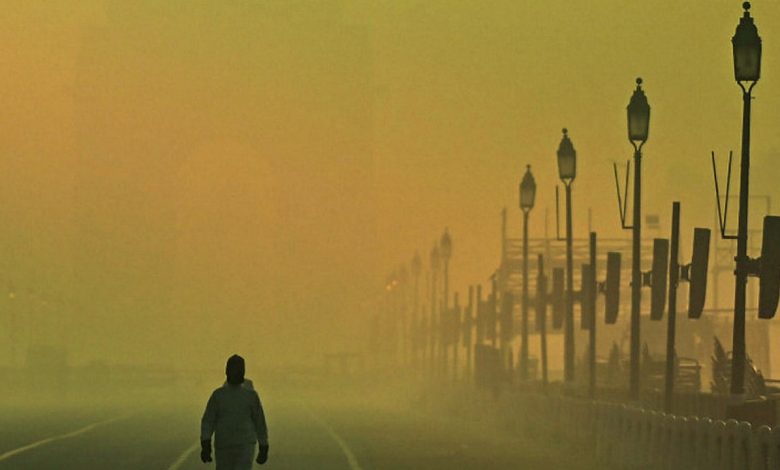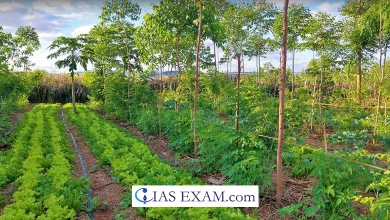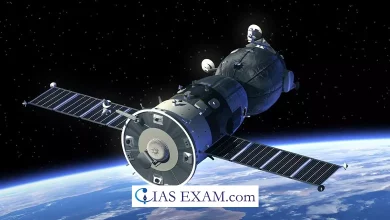Daily Current Affairs for UPSC
Striving for Clean Air: Air Pollution and Public Health in South Asia

Topic- Environment and Ecology [GS Paper-3]
Context- Recently, the World bank (WB) has released a report titled “Striving for Clean Air: Air Pollution and Public Health in South Asia”.
Key Highlights
India’s Scenario
- India has in total six large airsheds, some of them shared with Pakistan, between which air pollutants move.
- Even if Delhi National Capital Territory were to fully implement all air pollution control measures by the year 2030 while other parts of South Asia continued to follow current policies, it wouldn’t keep pollution exposure below 35 µg/m3.
South Asia:
- Currently more than 60% of South Asians are exposed to an average 35 µg/m3 of PM2.5 annually.
- In some parts of the Indo-Gangetic Plain (IGP) the number spiked to as much as 100 µg/m3 – nearly 20 times the upper limit of 5 µg/m3 recommended by the World Health Organisation.
- The six major airsheds in South Asia where air quality in one affected the other were;
- West or Central IGP: included Punjab (Pakistan), Punjab (India), Haryana, part of Rajasthan, Chandigarh, Delhi, Uttar Pradesh.
- Central or Eastern IGP: Bihar, West Bengal, Jharkhand, Bangladesh;
- Middle India: Odisha, Chhattisgarh;
- Middle India: Eastern Gujarat, Western Maharashtra;
- Northern or Central Indus River Plain: Pakistan, part of Afghanistan; and
- Southern Indus Plain and further west: South Pakistan, Western Afghanistan extending into Eastern Iran.
- Hazardous levels of air pollution have consistently caused a major public health crisis in South Asia that demands urgent action.
Bhutan:
- Bhutan isn’t protected from the air pollution in the IGP, and Thimphu sees worse pollution than before.
- If there is particulate pollution in the mountains, they will come down when the glaciers melt, and then go into the oceans, hence no one in the region is spared, and pollutants from elsewhere are noticed.
- South Asia has been home to 9 of the world’s 10 cities with the worst air pollution, which causes an estimated 2 million premature deaths across the region each year and incurs significant economic costs.
Particulate Matter:
- The concentrations of fine particulate matter such as soot and small dust (PM 2.5) in some of the region’s most densely populated and poor areas are up to 20 times higher than what WHO considers healthy i.e. 5 µg/m.
Sources of air pollution:
- Large industries, power plants and vehicles are the major sources of air pollution around the world, but in South Asia, other sources make substantial additional contributions.
- These also include combustion of solid fuels for cooking and heating, emissions from small industries such as brick kilns, burning of municipal and agricultural waste, and cremation
Wind direction and pollution:
- When the wind direction was predominantly northwest to southeast, 30% of the air pollution particularly in Indian Punjab came from the Punjab Province in Pakistan
- About 30% of the air pollution in the largest cities of Bangladesh (Dhaka, Chittagong, and Khulna) originated in India.
- In recent years, substantial pollution flowed in the other direction across borders.
Airshed approach:
- This is how the problem has been tackled in other regions, such as ASEAN, Nordic regions, and across China.
- States need to stop blaming and adopt a collaborative approach if they wish to reduce air pollution for their citizens.
Impact
The effect of air pollution includes;
- Stunting and reduced cognitive development among children,
- Respiratory infections and chronic and debilitating diseases.
- Rising healthcare expenses,
- Decline in a country’s productive capacity.
Solution given by World Bank: 3 Phase Roadmap
- The report also analysed multiple scenarios to reduce air pollution with varying degrees of policy implementation and cooperation among countries.
- The most affordable one, which calls for full coordination between airsheds, would cut the average exposure of PM 2.5 in South Asia to 30 µg/m³ at a cost of $278 million (?2,400 crore) per µg/m? of reduced exposure, and save more than 7,50,000 lives annually.
Roadmap:
- Phase 1: It sets the condition for airshed wide coordination by expanding the monitoring of air pollution beyond the big cities, sharing data with the public, creating or strengthening credible scientific institutes that analyze airsheds, and taking a whole-of-government approach.
- Phase 2: In this phase interventions are broadened beyond the traditional targets of power plants, large factories and transportation. Also during this phase major progress can be made in reducing air pollution from agriculture, solid waste management, cookstoves, brick kilns, and other small firms. At the same time, airshed-wide standards can be introduced.
- Phase 3: Economic incentives are fine tuned to enable private-sector solutions, in order to address distributional impacts, and to exploit synergies with climate change policies. Here trading of emission permits can also be introduced to optimize abatement across jurisdictions and firms.
Way Forward
- While the existing measures taken by the government can reduce particulate matter, significant reduction is possible only if the territories spanning the airsheds implement coordinated policies
- A modelling approach over South Asia as a whole, multiple scenarios are possible and must be applied
- Interdependence in air quality within airsheds in South Asia is important to be accounted for when weighing alternative pathways for pollution control.
- The scientists of India, Pakistan, Nepal, Bangladesh and other South Asian countries must establish a dialogue to tackle air pollution with an ‘airshed approach’.
- Curbing air pollution requires not only tackling its specific sources, but also close coordination across local and national jurisdictions.
- Regional cooperation can also help implement cost-effective joint strategies that leverage the interdependent nature of air quality.





.png)



